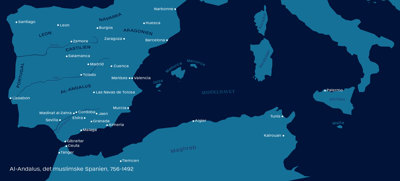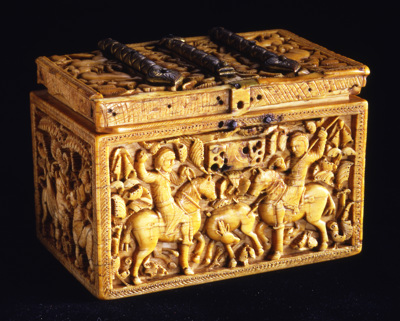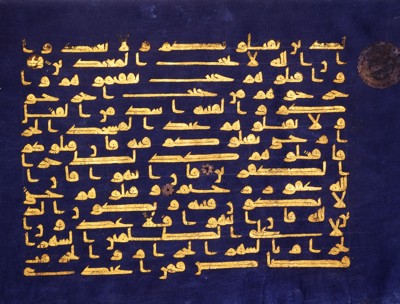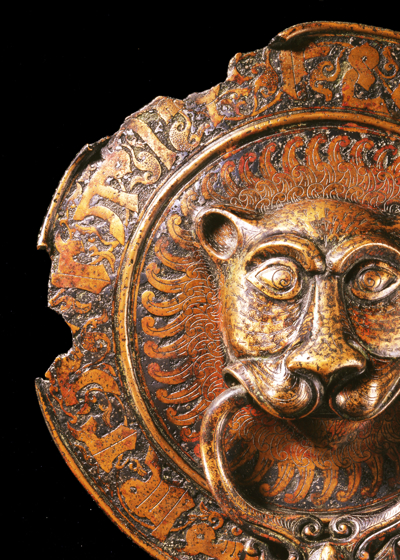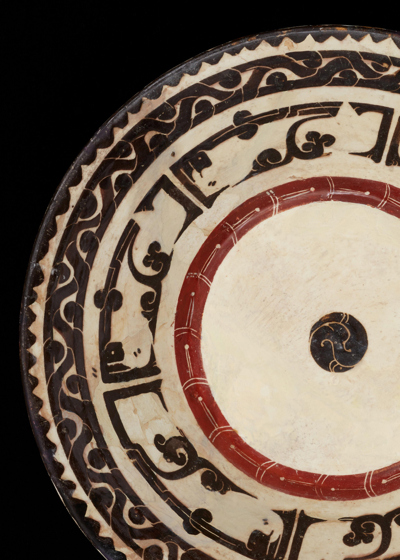Al-Andalus, det muslimske Spanien
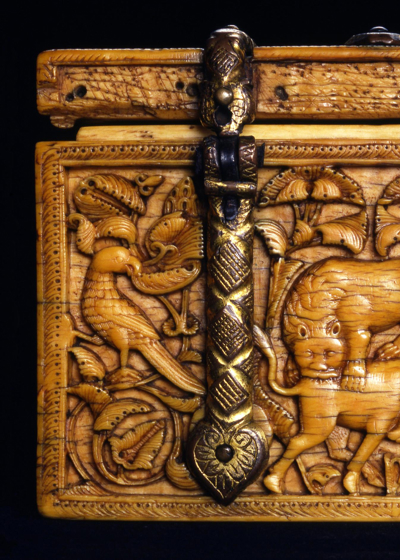
År 756-1492
Det lykkedes et enkelt medlem af umayyadefamilien, Abd al-Rahman, at undslippe det blodige opgør, der fulgte med abbasidernes magtovertagelse. Han flygtede til Spanien, den vestligste provins i Det Islamiske Rige, som muslimerne benævnte al-Andalus. Her etablerede han i 756 det spanske umayyadiske emirat med Cordoba som hovedstad. Byen udviklede sig snart til Vesteuropas største med mere end 500.000 indbyggere. Den blev et centrum for islamisk kultur med skoler og biblioteker, der tiltrak muslimske, kristne og jødiske intellektuelle.
De spanske umayyader nåede deres politiske og kulturelle højdepunkt i det 10. århundrede, hvor Abd al-Rahman 3. (912-961) tog titlerne kalif og “De Troendes Hersker” som tegn på rigets autonomi i forhold til abbasiderne og fatimiderne. Kunst indgik som et vigtigt led i fremhævelsen af kaliffens status, og mange ressourcer anvendtes til at fremstille forfinede værker, gerne med naturalistiske gengivelser af planter, dyr og mennesker. Abd al-Rahman 3.s paladsby uden for Cordoba, Madinat al-Zahra, satte med sin rigdom af udhugget marmor en ny standard, og moskeen i Cordoba udvidedes og udsmykkedes med en paladslignende pragt.
I begyndelsen af det 11. århundrede opløstes de spanske umayyaders kalifat i mange mindre småstater, Taifa-kongedømmerne, der dels bekæmpede hinanden og dels kom under stigende pres fra de kristne småriger, der havde overlevet i det nordlige Spanien. En appel om hjælp udefra førte til, at de nordafrikanske almoravider og senere almohaderne tog magten.
I slaget ved Las Navas de Tolosa i 1212 led almohaderne dog et afgørende nederlag til de forenede styrker fra kongedømmerne Aragonien og Castilien. Herefter kom Den Iberiske Halvø på kristne hænder, på nær en mindre del i sydøst, hvor nasriderne formåede at holde stand nogle århundreder endnu.
Nasridernes sultanat var opstået i 1232 i det bjergrige område omkring Granada, Malaga og Almeria. Riget var under konstant pres og måtte fra 1243 acceptere at betale tribut til det forenede kristne rige Castilien og Leon. Mange fordrevne muslimer søgte tilflugt hos nasriderne og især hovedstaden Granada udviklede sig til en sidste, blomstrende bastion for den islamiske kultur i Spanien, finansieret bl.a. igennem produktion af silke. I sultanernes paladsby Alhambra skabtes et unikt kompleks af paladser, vandløb og haver, der blev overgivet intakt ved rigets fald i 1492.
Efterfølgende levede den muslimske kultur videre på Den Iberiske Halvø igennem muslimske kunsthåndværkere, hvis produktion af indlagte træarbejder, mangefarvede fliser samt lustredekoreret keramik forblev efterspurgt af de kristne magthavere.
Geografi
